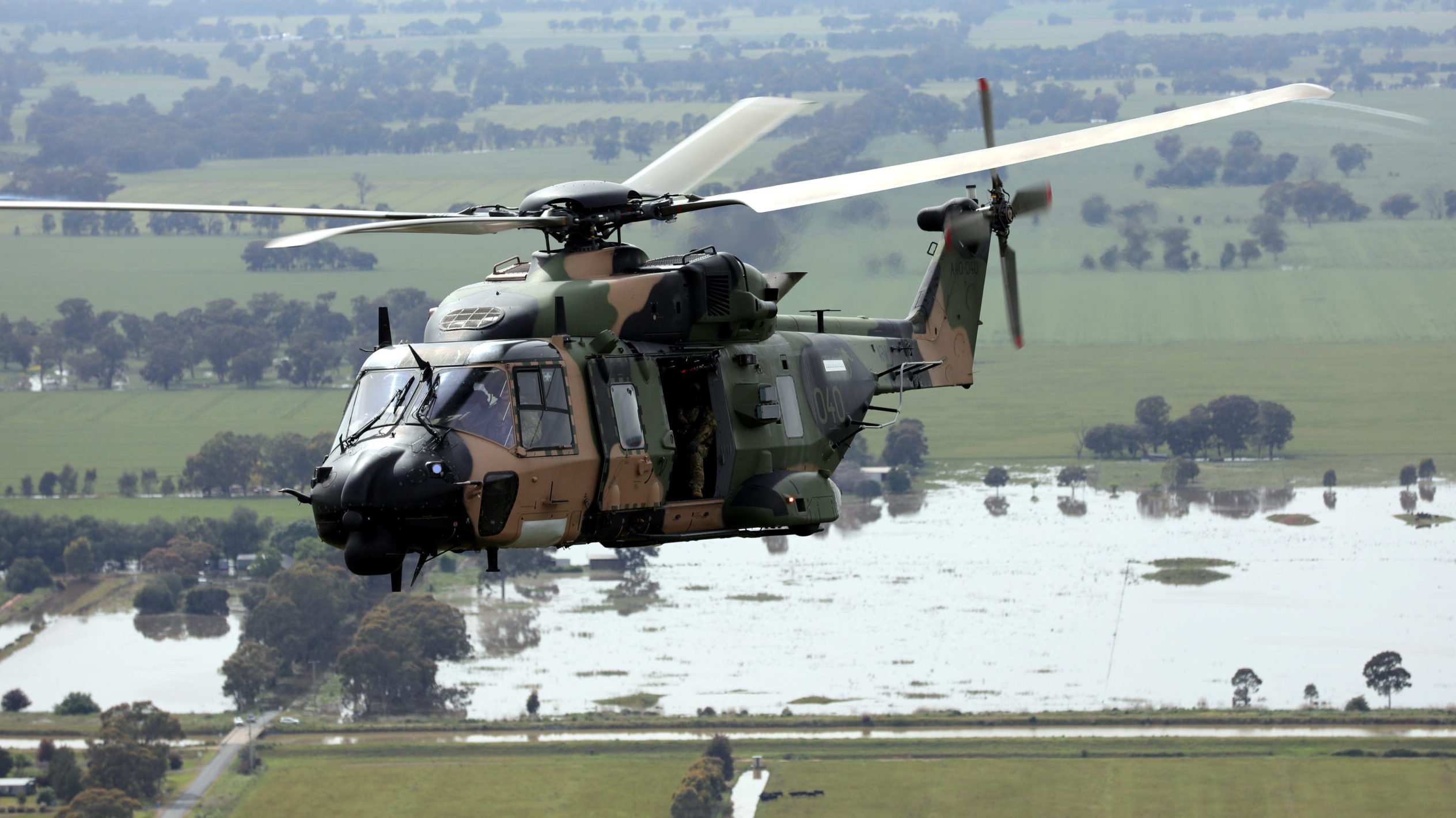
An Australian Army MRH90 Taipan helicopter conducts reconnaissance at Shepparton, Victoria as part of Operation Flood Assist 2022. (Australian Capt. Carolyn Barnett)
SYDNEY — The strange tale of Australia’s decision to disassemble and bury the roughly $1 billion fleet of permanently grounded Taipan helicopters has finally been discussed in detail by a government official almost one month after the first news story broke.
The saga has prompted criticism of the Defense Department’s persistent secrecy, including by a recently retired two-star general, a rare breaking of ranks in the Australian defense establishment.
8/ The lack of transparency around this issue speaks poorly of Defence, the government and democracy here. As a country, we can and should do much better to communicate government decision making to citizens. And to support other democracies in desperate need of assistance.
— Mick Ryan, AM (@WarintheFuture) January 15, 2024
It all began when the editor of the Asia Pacific Defence Reporter, Kym Bergmann, decided to try and ruin everyone’s Christmas holiday by running a story on Dec. 21 about the disposal and, in an update, Ukraine’s apparent request for them prior to the original story’s publication.
But, as with almost everything connected to the Taipan story, the Australian government remained mute — declining to say publicly that months before it had made the decision to dismantle the helicopters, sell whatever parts could be sold and bury the broken-up airframes.
Finally, after one small mention of the Taipans a few days ago a defense official, the government today directly and in detail discussed what was happening and why.
“Ukraine made an official request for the MRH‑90s in December, despite the aircraft’s well documented safety and operational concerns,” the minister for defense procurement, Pat Conroy, said in an interview with the Australian Broadcasting Corporation.
He said the government made the decision to permanently ground the Airbus helicopter fleet in September last year and replace them with American-made Black Hawks. Officials contacted Airbus to find out if any countries were interested in buying the Taipan airframes.
“There was zero interest in buying the air frames,” Conroy told ABC. “Therefore, the best value for taxpayers was to disassemble the aircraft and to begin selling the spare parts. Because the other option would have been to pay hundreds of millions of dollars to Airbus Australia to maintain these aircraft in a flying condition when there was no prospect that they would be flying again for the Australian Army.”
So by the time Kyiv’s request came through, Australia was three months into the Taipan “disposal strategy” and three months after any maintenance had ceased.
Australia is the most recent national customer to scrap use of the helos, joining Norway and Sweden, after those countries said they experienced low availability rates and high maintenance costs.
After the government disclosed some details of the Taipan affair earlier this week, Mick Ryan, the two-star who tweeted about the Taipans above, said in a tweet, “On this issue, the Australian government is doing a world class job in being non-transparent and obfuscating the issue — and wasting an asset that every other user seems to be employing as designed.” Ryan commanded Australia’s main combat force and retired as commander of the Australian Defence College.
Next month will mark two years since Russia invaded Ukraine, and Conroy defended the amount of help Australia is providing in his interview.
“We’ve provided $910 million worth of assistance, including $730 million of military assistance,” he said. “The Australian government continues to work closely with Ukraine to consider further options to provide timely, meaningful, and sustainable assistance.”
Few legislators have come forward in support of sending the taipans to Ukraine. Sen. Pauline Hanson, a prominent figure who is not in government, issued a statement today supporting transfer of some of the Taipans and calling for a halt to their disposal.
“Taipan helicopters destined for disposal and burial by the Australian Defence Force should be donated to Ukraine to improve that country’s ability to medically evacuate soldiers from battlegrounds,” she said in the statement. “If our defence forces have no further use for these platforms, I see no harm or great cost in supplying a limited number of them to Ukraine.”
She raised an issue other lawmakers have, that shelving the Taipans before most of the Black Hawk fleet arrives leaves Australia short of assets to provide flood and fire assistance or respond to military emergencies.












